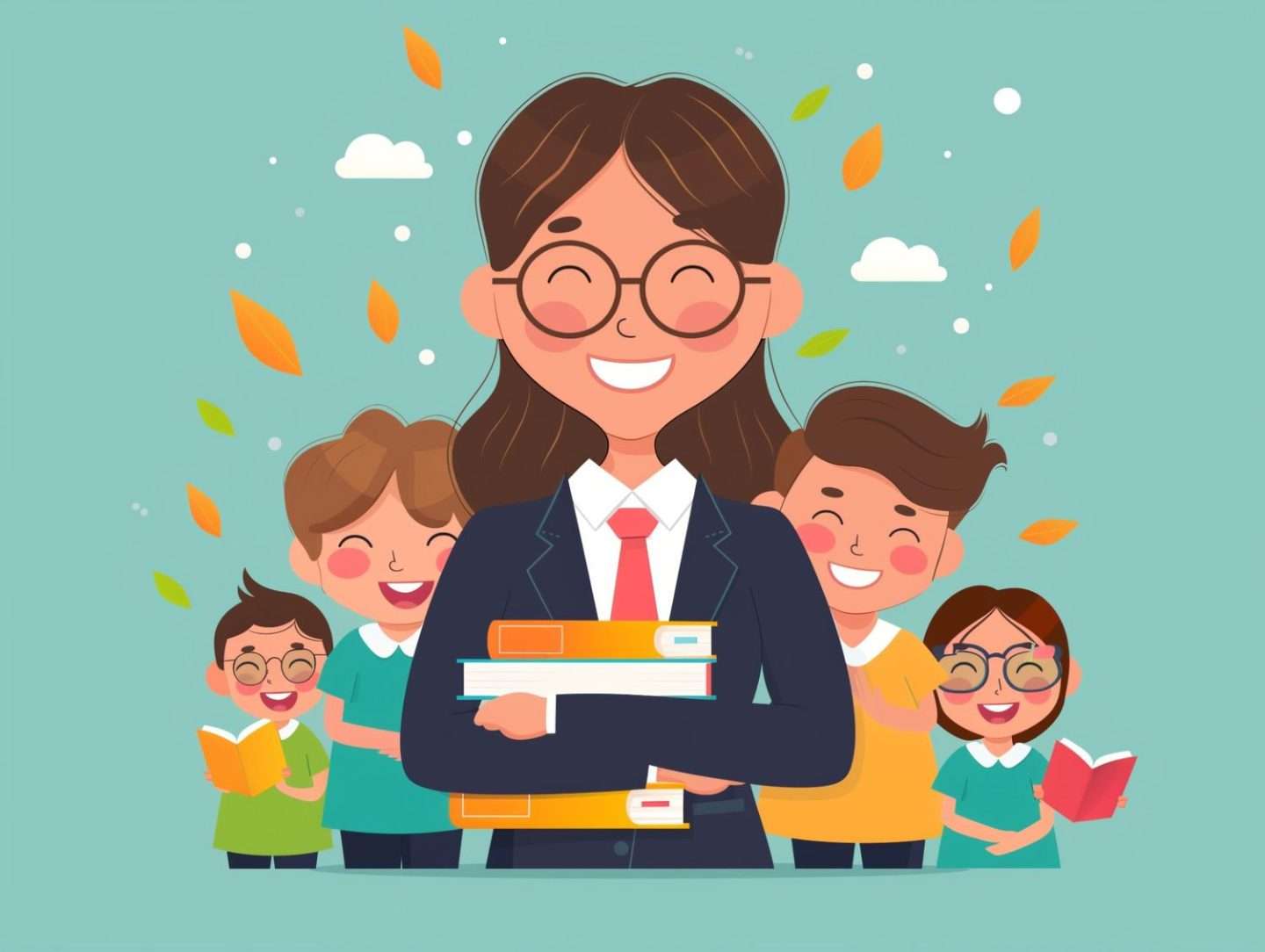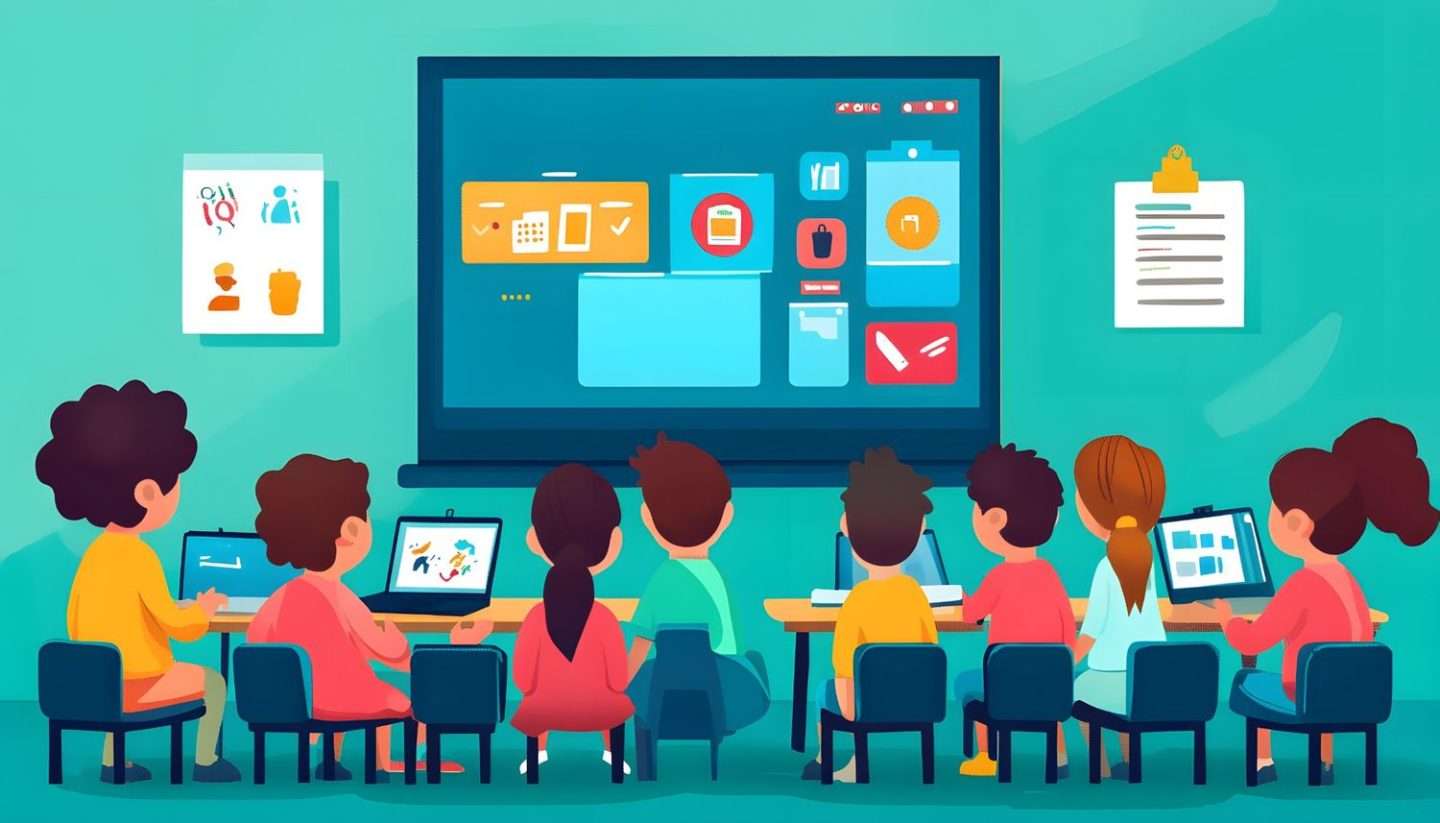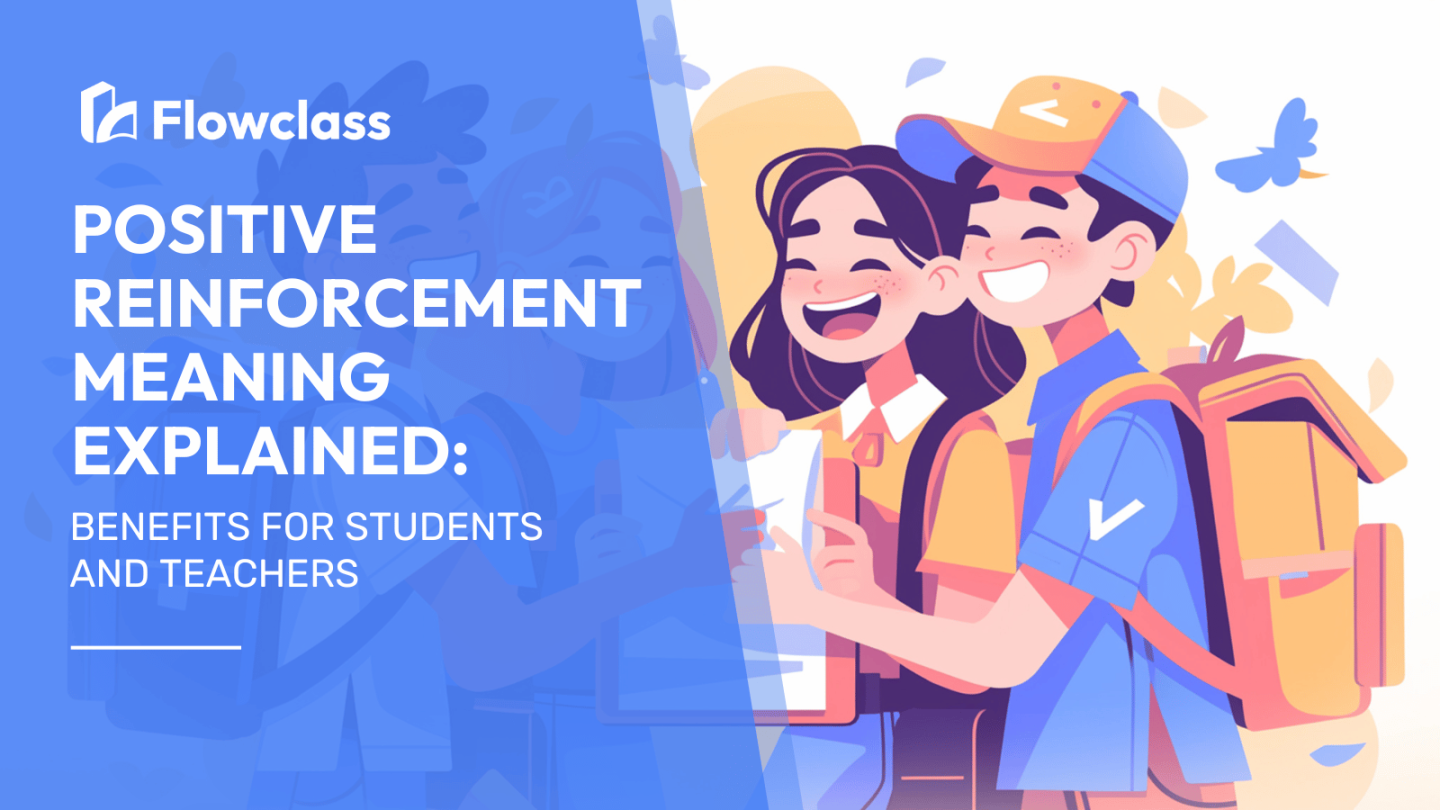In the realm of education, positive reinforcement is a powerful tool that can have a profound impact on both students and teachers. By understanding the meaning of positive reinforcement and its benefits, both parties can create a supportive and motivating learning environment. Positive reinforcement involves acknowledging and rewarding desired behaviors, which can boost students’ self-esteem, enhance their motivation, and foster a love for learning. Similarly, teachers can benefit from positive reinforcement by experiencing increased job satisfaction and improved classroom management.
By incorporating positive reinforcement strategies, educators can create a positive classroom culture where students feel valued and appreciated. This approach helps develop a growth mindset and enhances students’ overall academic performance. Teachers, on the other hand, can enjoy improved student engagement, reduced disruptive behavior, and an increased sense of accomplishment.
In this article, we will explore the meaning of positive reinforcement in education, delve into its benefits for both students and teachers and provide practical strategies for implementing this powerful technique in the classroom. Whether you’re an educator or a student, understanding the concept of positive reinforcement can lead to a more productive and fulfilling educational experience.
The psychology behind positive reinforcement

Positive reinforcement is a fundamental concept in the field of psychology, particularly in the context of learning and behavior modification. It is based on the principles of operant conditioning, which was pioneered by the renowned psychologist B.F. Skinner. Operant conditioning posits that behaviors are shaped by the consequences that follow them. When a desired behavior is followed by a positive consequence, the likelihood of that behavior occurring again in the future increases.
The underlying mechanism of positive reinforcement is simple yet powerful. When a student exhibits a desirable behavior, such as completing an assignment on time or participating actively in class, providing a positive consequence, such as praise, a reward, or a tangible incentive, reinforces that behavior. The student then associates the positive consequence with the behavior, making it more likely that they will repeat the behavior in the future. This process strengthens the neural pathways in the brain, creating a positive feedback loop that encourages the student to continue engaging in the desired behavior.
The effectiveness of positive reinforcement lies in its ability to tap into the human desire for recognition, approval, and a sense of accomplishment. When students receive positive feedback for their efforts, it boosts their self-esteem, motivation, and engagement in the learning process. This, in turn, leads to improved academic performance, as students are more likely to put forth their best effort when they know their hard work will be acknowledged and rewarded.
Benefits of positive support for students
One of the primary benefits of positive reinforcement for students is its ability to enhance their self-esteem and confidence. When students receive positive feedback and recognition for their achievements, it reinforces the idea that their efforts are valued and appreciated. This boost in self-esteem can have a ripple effect, leading to improved academic performance, increased engagement in the classroom, and a greater willingness to take on new challenges.
Moreover, positive reinforcement fosters a growth mindset in students, which is the belief that their abilities and intelligence can be developed through hard work and dedication. When students are rewarded for their efforts, they are more likely to believe that they can improve and succeed, rather than viewing their abilities as fixed or limited. This mindset shift can have a profound impact on a student’s academic trajectory, as they become more resilient, persistent, and willing to take risks in their learning.
Positive reinforcement also serves as a powerful motivator for students. By linking desired behaviors with positive consequences, students are more likely to engage in those behaviors voluntarily, without the need for external pressure or punishment. This intrinsic motivation leads to a deeper investment in the learning process, as students begin to see the value and enjoyment in the work they are doing. As a result, students are more likely to develop a genuine love for learning, which can have long-lasting benefits for their academic and personal growth.
Benefits of positive reinforcement for teachers

Positive reinforcement not only benefits students but also has a profound impact on teachers. When teachers employ positive reinforcement strategies in the classroom, they can experience a significant boost in job satisfaction and overall well-being.
One of the primary benefits of positive reinforcement for teachers is improved classroom management. By focusing on and rewarding positive behaviors, teachers can effectively reduce disruptive or undesirable behaviors in the classroom. This, in turn, leads to a more harmonious and productive learning environment, where both students and teachers can thrive. With fewer behavioral issues to address, teachers can devote more time and energy to delivering high-quality instruction and supporting their students’ academic growth.
Furthermore, positive reinforcement can enhance the teacher-student relationship. When teachers consistently recognize and acknowledge their students’ efforts and achievements, it fosters a sense of trust, respect, and mutual understanding between the two parties. This positive rapport can create a supportive and nurturing learning environment, where students feel comfortable taking risks, asking questions, and seeking help when needed. As a result, teachers may experience greater job satisfaction, as they witness their students’ progress and development.
Positive reinforcement can also contribute to improved teacher self-efficacy. When teachers see the positive impact of their strategies on student learning and behavior, they are more likely to feel confident in their abilities and the effectiveness of their teaching methods. This increased sense of self-efficacy can lead to greater resilience in the face of challenges, a willingness to try new teaching approaches, and a renewed enthusiasm for the profession.
Examples of positive support in the classroom

Positive reinforcement can take many forms in the classroom, and the specific strategies employed will depend on the age, developmental stage, and individual needs of the students. However, some common examples of positive support in the educational setting include:
Verbal praise: Acknowledging and verbally praising students for their efforts, achievements, or positive behaviors is one of the most immediate and effective forms of positive reinforcement. This can range from simple statements like “Great job!” or “I’m proud of you” to more detailed feedback that highlights the specific behaviors or accomplishments being recognized.
Tangible rewards: Providing tangible rewards, such as stickers, certificates, or small prizes, can be an effective way to reinforce desired behaviors. These rewards should be meaningful and directly tied to the behavior being recognized, rather than just being given arbitrarily.
Point systems or token economies: Implementing a point system or token economy, where students earn points or tokens for exhibiting positive behaviors, can be a powerful way to reinforce desired actions. These points or tokens can then be exchanged for privileges, rewards, or privileges.
Public recognition: Publicly recognizing and celebrating student achievements, such as through a classroom or school-wide award ceremony, can be a highly motivating form of positive reinforcement. This not only acknowledges the student’s efforts but also serves as an inspiration for their peers.
Classroom privileges: Granting students additional privileges, such as extra free time, the opportunity to lead a class activity, or the chance to choose a special activity, can be an effective way to reinforce positive behaviors.|
Strategies for implementing positive reinforcement

Effective implementation of positive reinforcement in the classroom requires careful planning and a consistent approach. Here are some strategies to consider:
Clearly define desired behaviors: Before implementing positive support, it’s essential to clearly define the specific behaviors you want to encourage and reinforce. This ensures that both the teacher and the students have a shared understanding of the expectations.
Provide immediate and specific feedback: When a student exhibits a desired behavior, it’s important to provide immediate and specific feedback. This reinforcement should be given as soon as possible after the behavior, so the student can clearly connect the two.
Use a variety of reinforcement methods: Incorporating a mix of verbal praise, tangible rewards, and other forms of positive reinforcement can help maintain student engagement and prevent the reinforcement from becoming predictable or monotonous.
Tailor reinforcement to individual needs: Different students may respond better to different types of positive reinforcement. Observe your students and adjust your approach to cater to their unique preferences and motivational needs.
Involve students in the process: Encourage students to participate in the positive reinforcement process by allowing them to set their own goals, track their progress, and provide input on the types of rewards they find most motivating.
Maintain consistency and fairness: Consistently applying positive support across all students and ensuring that the rewards are fair and equitable is crucial for maintaining the effectiveness of this approach.
Gradually fade reinforcement: Over time, gradually reduce the frequency or intensity of the positive support, as the desired behaviors become more ingrained and self-sustaining.
Positive support vs punishment: Which is more effective?
When it comes to shaping student behavior and learning, educators are often faced with the choice between positive reinforcement and punishment. While both approaches can have an impact, research overwhelmingly suggests that positive reinforcement is the more effective and beneficial strategy.
Positive reinforcement focuses on rewarding and acknowledging desired behaviors, which leads to an increase in those behaviors. This approach is based on the principles of operant conditioning, where the positive consequences following a behavior strengthen the neural pathways and increase the likelihood of the behavior being repeated. In contrast, punishment aims to decrease or eliminate undesirable behaviors by introducing negative consequences, such as reprimands, detention, or loss of privileges.
One of the key advantages of positive reinforcement is that it fosters a positive and supportive learning environment. By emphasizing and rewarding positive behaviors, students feel valued, motivated, and encouraged to continue engaging in productive activities. This, in turn, leads to improved academic performance, increased engagement, and the development of a growth mindset.
Punishment, on the other hand, can have unintended negative consequences. It may lead to resentment, fear, or avoidance of the learning environment, which can hinder the development of positive teacher-student relationships and undermine the overall learning process. Additionally, punishment is often focused on the behavior itself, rather than addressing the underlying reasons for the behavior, which can limit its long-term effectiveness.
Furthermore, research has shown that positive support is more effective in promoting long-term behavior change. When students are rewarded for their positive behaviors, they are more likely to internalize those behaviors and continue to exhibit them even in the absence of external rewards.
In contrast, punishment may only temporarily suppress undesirable behaviors, as students may simply learn to avoid the consequences without actually changing their underlying motivations or behaviors.
Positive reinforcement techniques for remote learning
The COVID-19 pandemic has brought about a significant shift in the educational landscape, with many schools and universities transitioning to remote or hybrid learning models. In this context, the application of positive reinforcement strategies becomes even more crucial, as educators strive to maintain student engagement, motivation, and academic progress in a virtual setting.
One effective positive reinforcement technique for remote learning is the use of virtual rewards and recognition. This can include digital badges, certificates, or virtual “shout-outs” during online class sessions or through school communication channels. These forms of recognition not only acknowledge student achievements but also provide a sense of accomplishment and belonging, which can be especially important in the absence of physical interactions.
Incorporating gamification elements into remote learning can also be a powerful way to leverage positive reinforcement. By designing online activities, quizzes, or challenges that reward students with points, badges, or virtual rewards, educators can tap into the natural human desire for achievement and competition, while also reinforcing desired behaviors and learning outcomes.
Regular one-on-one check-ins and personalized feedback are another valuable positive reinforcement strategy for remote learning. By scheduling individual meetings or providing detailed written feedback, teachers can offer specific praise, encouragement, and guidance to students, helping them feel seen, valued, and supported in their learning journey.
Additionally, the use of virtual “student of the week” or “student spotlight” programs can serve as a powerful form of public recognition, showcasing the achievements and contributions of individual students to their peers and the broader school community. This not only reinforces the positive behaviors of the highlighted students but also inspires others to strive for similar accomplishments.
Ultimately, the key to effective positive reinforcement in remote learning is to create a virtual environment that is supportive, engaging, and focused on celebrating student successes, rather than solely emphasizing academic performance or punishing shortcomings.
Positive reinforcement in different educational settings
Positive reinforcement is a versatile approach that can be effectively implemented across a wide range of educational settings, from early childhood education to higher learning institutions.
In early childhood education, positive reinforcement plays a crucial role in shaping the foundational behaviors and mindsets of young learners. Preschool and kindergarten teachers can use simple, age-appropriate positive reinforcement strategies, such as verbal praise, sticker charts, or small tangible rewards, to encourage desired behaviors like sharing, following instructions, and participating in group activities. This early exposure to positive reinforcement helps children develop a strong sense of self-worth, a love for learning, and the social-emotional skills necessary for future academic success.
As students progress through the elementary and secondary education levels, positive reinforcement strategies can be adapted to align with their developmental needs and academic goals. Teachers can use a combination of individual and group-based positive reinforcement, such as public recognition, classroom privileges, and team-based rewards, to foster a collaborative and supportive learning environment. This approach not only reinforces academic achievements but also promotes the development of important life skills, such as teamwork, problem-solving, and resilience.
In the realm of higher education, positive reinforcement can be effectively utilized to support students’ academic and personal growth. College professors and instructors can incorporate positive reinforcement strategies, such as providing detailed feedback, offering opportunities for public presentations or publications, and recognizing outstanding contributions to class discussions or research projects. These forms of positive reinforcement can help motivate students, build their confidence, and nurture their intellectual curiosity, ultimately leading to improved academic performance and a deeper engagement with the subject matter.
Positive reinforcement can also be a valuable tool in specialized educational settings, such as special education classrooms, alternative schools, or vocational training programs. In these environments, where students may face unique challenges or barriers to learning, positive reinforcement can be instrumental in fostering a sense of accomplishment, boosting self-esteem, and encouraging continued progress and personal growth.
Conclusion: The power of positive reinforcement in education
In the dynamic and ever-evolving field of education, the power of positive reinforcement cannot be overstated. By understanding the psychology behind this approach and leveraging its numerous benefits for both students and teachers, educators can create a learning environment that is supportive, engaging, and conducive to academic and personal growth.
For students, positive reinforcement can enhance self-esteem, foster a growth mindset, and intrinsically motivate them to engage in the learning process. This, in turn, leads to improved academic performance, a deeper appreciation for learning, and the development of essential life skills. Similarly, for teachers, positive reinforcement can improve classroom management, strengthen teacher-student relationships, and boost job satisfaction and self-efficacy.
Whether in traditional classroom settings or in the context of remote or hybrid learning, the strategies and techniques of positive reinforcement can be effectively adapted and implemented to meet the unique needs of diverse educational environments. By consistently acknowledging and rewarding desired behaviors, educators can create a positive and supportive learning culture that empowers students to reach their full potential.
📣Want to learn more about important concepts in childhood development? Check out our Flowclass blog for more.


